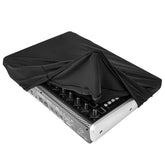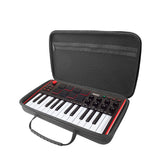Exploring Musical Expression in Piano Playing
01. Analysis and Comparison
Once you are reasonably familiar with the score, seek out videos of master performances online. Analyze how they interpret the music and perceive the differences.
02. Direction in Performance
Some scores include musical symbols to emphasize tonal qualities. Follow these directions to bring out the richness of the music. Even short pieces can be musically expressive when played with the correct direction.

03. Attention to Detail
Experience and analyze your perception of details in musical segments. Identify the pleasing tonal qualities and discern the differences between good and not-so-good renditions. Note these subtle differences for application in future musical interpretations.
04. Cultivate Musical Appreciation
Musicality is developed through accumulated exposure to quality music. Accumulate a repertoire of enjoyable music to nurture your musical sensitivity and aid in your progression.

Upon receiving a new score, first immerse yourself in the music. Familiarize yourself with the melody, harmony, and structural elements of the piece. Then, delve into the composer's era, personal background, and artistic intent. Only through comprehensive analysis can one truly understand a piece, enabling performers to imbue it with musicality and enhance its emotive power.







